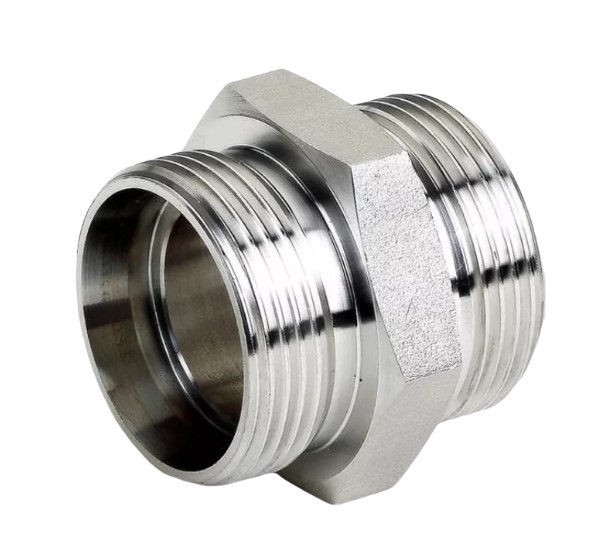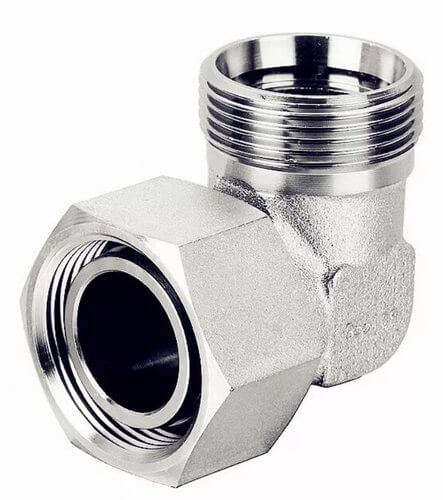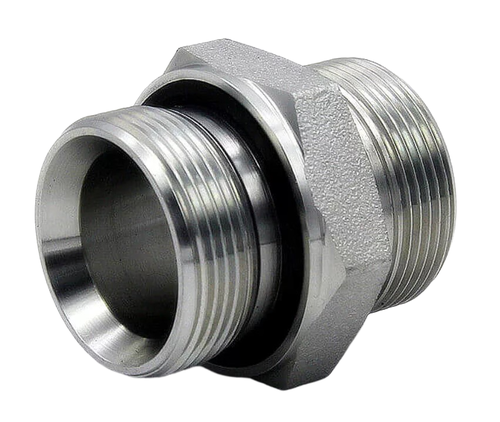DIN (Deutsches Institut fur Normung) fittings are an integral component of hydraulic systems, providing secure and leak-free connections between hoses, tubes, and pipes. In this comprehensive guide on DIN fittings we will examine what they are, their purpose, how they function, and why they’re crucial. Whether you are new to hydraulics or looking to broaden your knowledge base – this guide has everything you need!
What Are DIN Fittings?
DIN, or German Industrial Standard fittings, are hydraulic fittings designed to connect hoses, tubes and pipes in hydraulic systems securely without leakage – essential in high-pressure applications. DIN fittings consist of three components – fitting body with tapered thread, nut with straight thread that matches up perfectly with the sleeve thread pattern, and sleeve with tapered thread pattern that matches up perfectly with its body thread.
How Do DIN Fittings Work?
DIN fittings work by compressing a soft metal sleeve around a hose or tube, creating a seal resistant to high pressure and vibration. The nut secured onto the fitting body then tightens down tightly ensuring a leak-free connection that’s ideal for high pressure applications. They’re easy to install or uninstall as well, making DIN fittings popular choices within hydraulic industry applications.
Types of DIN Fittings:
There are various kinds of DIN fittings, such as:
➢ DIN 2353 fittings use a cutting ring to compress onto the tube during assembly. With a 24° cone seat, they offer a secure connection against high pressures and vibration. These fittings are commonly used with metric-sized steel tubing.
➢ DIN 3865 fittings have a 24° cone seat like DIN 2353 fittings, but with an added O-ring seal. This combination ensures a leak-free connection in hydraulic systems. The O-ring provides a tight seal, resisting leakage under high pressure and keeping out external contaminants.
➢ DIN 3852 is a standard for metric tube fittings in hydraulic systems. They connect metric-sized tubes to pumps, valves, and cylinders. These fittings have a 24° cone and are used in high-pressure applications.
Advantages of DIN Fittings:
➢ High-pressure resistance
➢ Secure and leak-free connection
➢ Easy to install and remove
➢ Durable and long-lasting
➢ Can be used in various applications
Disadvantages of DIN Fittings:
➢ More expensive than other types of fittings
➢ Require special tools for installation
How to Install DIN Fittings?
Installing DIN fittings requires some specialized tools, but it’s a relatively straightforward process. Here’s how to install DIN fittings:
➢ Cut the hose or tube to the desired length.
➢ Slide the nut and sleeve onto the hose or tube.
➢ Insert the hose or tube into the fitting body.
➢ Tighten the nut onto the fitting body using a wrench or specialized tool.
➢ Check for leaks and adjust the fitting as needed.
Applications and Industries
DIN fittings are widely utilized across numerous industries due to their adaptability and reliability. Here, we explore their applications within various fields.
➢ Automotive Industry: Widely utilized within applications related to brake and fuel systems. Their secure yet leak-free connection makes DIN fittings ideal for this use case.
➢ Aerospace Industry: This type of fittings have long been utilized in hydraulic and fuel systems, providing flexibility during high pressure or vibration environments while being resistant to corrosion.
➢ Marine Industry: Widely utilized for hydraulic and fuel systems. Their corrosion-resistant qualities make them an excellent choice in this environment, while being easily installed or removed.
➢ Construction Industry: Widely used for heavy machinery due to their high pressure tolerance and ease of installation/removal.
➢ Food Industry: Used extensively in food processing and packaging equipment due to suitability for direct food contact and easy cleanup.
Conclusion
DIN fittings are a key part of hydraulic systems, providing secure and leak-free connections that make high-pressure applications possible. DIN fittings are simple to install or remove from their connections, making them popular choices in the hydraulic industry. Working with hydraulic systems requires understanding what DIN fittings are, their purpose and importance – this comprehensive guide should give you more of an understanding about DIN fittings and their role within your hydraulic system.
Post time: May-26-2023




